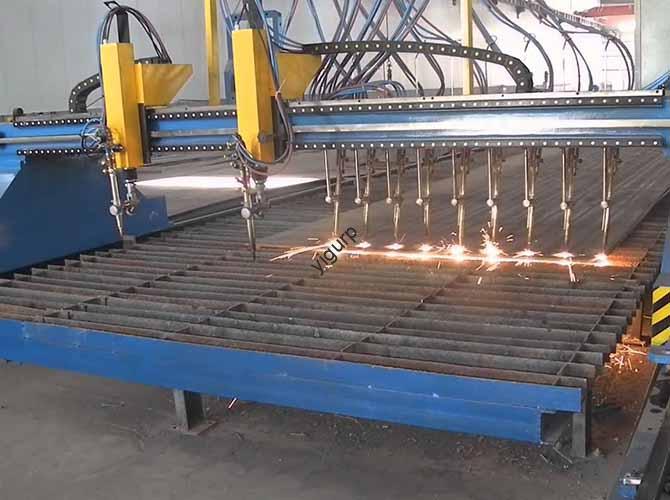La finitura superficiale è un parametro fondamentale per le parti lavorate a CNC, incidendo direttamente sulla funzionalità, estetica, e prestazioni, soprattutto in settori come quello aerospaziale, dispositivi medici, e automobilistico. Questo articolo analizza le strategie attuabili per migliorare Finitura superficiale della lavorazione CNC, utilizzando confronti chiari, approfondimenti basati sui dati, e soluzioni pratiche.
1. Primo: Comprendere i parametri di valutazione della finitura superficiale
Before improving surface finish, you need to measure it accurately. The table below compares the most common evaluation indicators, their definitions, e casi d'uso:
| Indicator | Definizione | Funzione chiave | Caso d'uso ideale |
| Valore ra | Arithmetic average of surface microscopic undulations (in μm) | Più ampiamente usato; simple to measure | General CNC parts (rotazione, fresatura) |
| N-level Standard | ISO grading system (N1 to N12) | Smaller number = higher finish | International quality compliance |
| Rz Value | Ten-point height of roughness (peak-to-valley average) | Reflects extreme surface irregularities | Parts with strict wear resistance requirements |
| Grit Size | Measure of sanding/polishing particle fineness | Larger grit number = finer surface | Post-machining polishing (PER ESEMPIO., leghe di alluminio) |
2. Fattori fondamentali che danneggiano la finitura superficiale del CNC: Un contrasto
Poor surface finish often stems from mismanagement of key variables. Below is a contrast between detrimental practices E optimal controls for critical factors:
| Fattore | Detrimental Practices (Causes Roughness) | Optimal Controls (Boosts Smoothness) |
| Tool Conditions | Dull edges, low-wear materials (PER ESEMPIO., HSS), Nessun rivestimento | Ultra-fine grain carbide O PCD (polycrystalline diamond) utensili; TiAlN-coated edges |
| Parametri di taglio | Low spindle speed, high feed rate, deep cutting depth | Ad alta velocità (reduces tool mark spacing), low feed (0.05–0.1 mm/rev), shallow depth (0.1–0,3 mm) |
| Material Prep | Unprocessed alloys (internal stress), Metalli morbidi (Burrs) | Stress relief treatment (per parti a parete sottile); pre-machining deburring (for aluminum alloys) |
| Cooling/Lubrication | Insufficient coolant, external cooling only (per buchi profondi) | Combinato high-pressure internal cooling + external cooling; coolant matched to material (PER ESEMPIO., mineral oil for steel) |
| Machine/Fixture Stability | Loose clamps, low-rigidity CNC machines | High-precision 5-axis linkage machines; rigid clamp designs (avoids vibration-induced ripples) |
3. Step-by-Step Strategies to Improve Surface Finish
Segui questo lineare, actionable process to achieve consistent, high-quality surface finish:
Fare un passo 1: Optimize Tools and Cutting Parameters
- Utilizzo imported PCD tools for non-ferrous metals (PER ESEMPIO., alluminio) to avoid sticking and burrs.
- Applicare a “ad alta velocità, low-feed” finishing strategy: Per parti in acciaio, set spindle speed to 3,000–6,000 RPM, tasso di alimentazione a 0.08 mm/giro, and cutting depth to 0.2 mm.
- Conduct 2–3 trimming passes to eliminate residual tool marks from rough machining.
Fare un passo 2: Enhance Cooling and Chip Evacuation
- For deep-hole machining (PER ESEMPIO., boreholes >10x diameter), utilizzo high-pressure internal cooling (30–50 bar) to direct coolant to the cutting zone—this reduces heat and washes away chips immediately.
- Choose water-soluble coolant for aluminum (impedisce l'ossidazione) and mineral oil for stainless steel (riduce l'attrito).
Fare un passo 3: Upgrade Equipment and Processes
- Replace old 3-axis machines with 5-axis linkage CNC equipment for complex surfaces (PER ESEMPIO., lame di turbina)—it minimizes re-clamping errors and vibration.
- Adottare turn-mill composite machining for parts with multiple features (PER ESEMPIO., shafts with threads and slots)—completing all operations in one clamping avoids surface scratches from repositioning.
Fare un passo 4: Implement Quality Control and Post-Processing
- Establish a full-chain quality check: Per esempio, conduct IPQC (In-Process Quality Control) inspections every 2 ore (as used by Wemet factory) to catch deviations early.
- Add post-processing steps:
- Test oxidation before anodizing to solve “material flowering” (uneven color) in aluminum parts.
- Utilizzo blister packaging for transportation to prevent “three injuries”: abrasions, bruises, and hanging injuries.
4. Typical CNC Machining Methods: Finish Ranges and Improvement Tips
Different CNC processes yield varying baseline surface finishes. Use this table to set targets and identify improvement opportunities:
| Metodo di lavorazione | Baseline Ra Range (µm) | Improvement Tip |
| Ordinary Turning | 1.6–0,8 | Upgrade to mirror turning (use finely ground PCD tools) for Ra 0.04–0.01 μm |
| Rough Milling | 20–5 | Switch to fine milling with carbide tools for Ra 6–0.63 μm |
| Fine Boring (Acciaio) | 0.63–0.08 | Add a final honing pass to reach Ra <0.04 µm |
| Ultra-Precision Grinding | 0.04–0.01 | Use mirror grinding (diamond abrasives) for Ra <0.01 µm |
La prospettiva della tecnologia Yigu
Alla tecnologia Yigu, we believe improving CNC surface finish is not just about optimizing single factors—it’s about integrating tool selection, process control, and quality management into a seamless workflow. Our clients in the medical and automotive sectors often require Ra values below 0.1 µm; to meet this, we combine 5-axis CNC machines with custom PCD tools and real-time coolant monitoring. Inoltre, we’ve developed a post-processing oxidation test that reduces “material flowering” rates by 90%, ensuring consistent aesthetics. Per i produttori, investing in these integrated solutions not only boosts surface finish but also cuts rework costs by up to 30%.
Domande frequenti
- What is the minimum Ra value achievable with CNC machining?
With ultra-precision processes like mirror turning or mirror grinding, Valori di RA bassi come 0.01 µm can be achieved—suitable for high-end optical or medical parts.
- I materiali morbidi come l'alluminio possono ottenere la stessa finitura superficiale dell'acciaio?
SÌ, ma l'alluminio richiede passaggi aggiuntivi: Use PCD tools to avoid burrs, apply high-pressure cooling, and conduct post-machining polishing. Aluminum can reach Ra 0.04 µm, comparable to fine-turned steel.
- How does machine rigidity affect surface finish?
Low-rigidity machines cause vibration between the tool and workpiece, leading to ripples or deep tool marks. High-rigidity 5-axis machines suppress this vibration, ensuring Ra values stay consistent across the entire part—critical for complex geometries.
